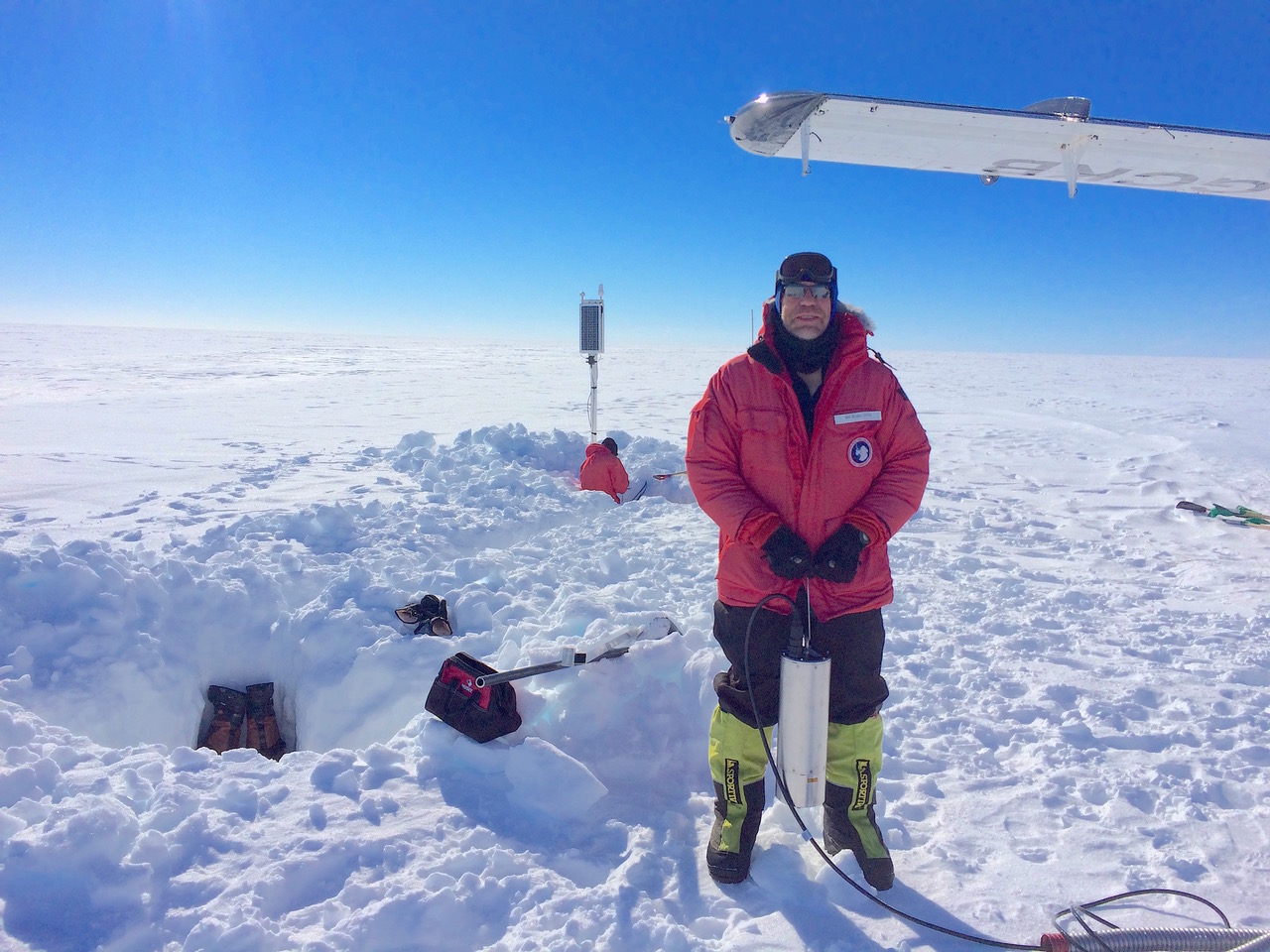Winds blowing across snow dunes on Antarctica’s Ross Ice Shelf cause the massive ice slab’s surface to vibrate, producing a near-constant drumroll of seismic tones. Video: National Oceanic and Atmospheric Administration and Scripps Institution of Oceanography at UC San Diego.
This story is based on content developed by Lauren Lipuma, senior writer at the American Geophysical Union.
Just in time for Halloween – listen to the supernatural sounds of winds blowing across snow dunes on Antarctica’s Ross Ice Shelf. The winds cause the massive ice slab’s surface to vibrate, producing a near-constant set of seismic tones scientists could potentially use to monitor changes in the ice shelf from afar, according to new research led by Colorado State University.
To better understand the physical properties of the Ross Ice Shelf — the largest on the continent — researchers buried 34 extremely sensitive seismic sensors under the snow covering its surface. The sensors allowed the researchers to monitor the ice shelf’s vibrations and study its structure and movements for over two years, from late 2014 to early 2017.
When the researchers started analyzing seismic data on the Ross Ice Shelf, they noticed something odd: the vibration was almost constant. Winds whipping across the massive snow dunes caused the ice sheet’s surface to rumble, like the pounding of a colossal drum.
They also noticed the pitch of this seismic hum changed when weather conditions altered the snow layer’s surface. They found the ice vibrated at different frequencies when strong storms rearranged the snow dunes or when the air temperatures at the surface went up or down, which changed how fast seismic waves traveled through the snow.

Professor Rick Aster takes a break from installing seismometers on the Ross Ice Shelf. Photo courtesy of Rick Aster.
“It’s kind of like you’re blowing a flute, constantly, on the ice shelf,” said Julien Chaput, a geophysicist and mathematician who conducted the research as a postdoctoral fellow working with Professor Rick Aster, head of the Department of Geosciences at CSU. Chaput is now an assistant professor of geological sciences at the University of Texas – El Paso.
The study was published Oct. 16 in Geophysical Research Letters, a journal of the American Geophysical Union.
Aster is the corresponding author for the study. CSU’s Dan McGrath and Michael Baker also contributed to this research.
Scientists from the U.S. Geological Survey, Scripps Institution of Oceanography, Pennsylvania State University, Wood Hole Oceanographic Institution and Washington University in St. Louis were co-authors of the study.